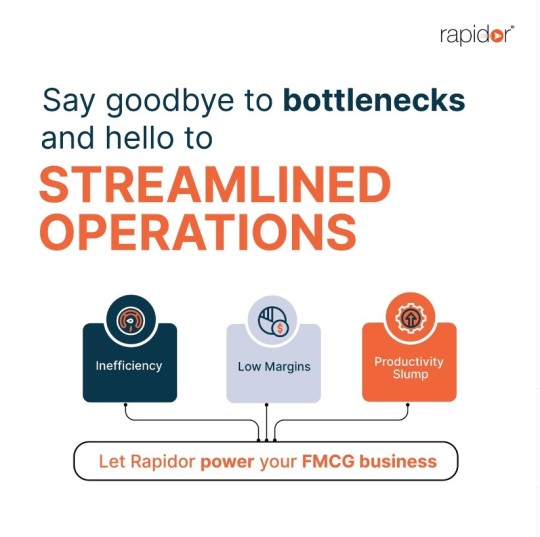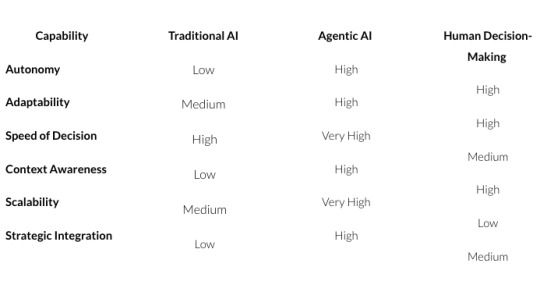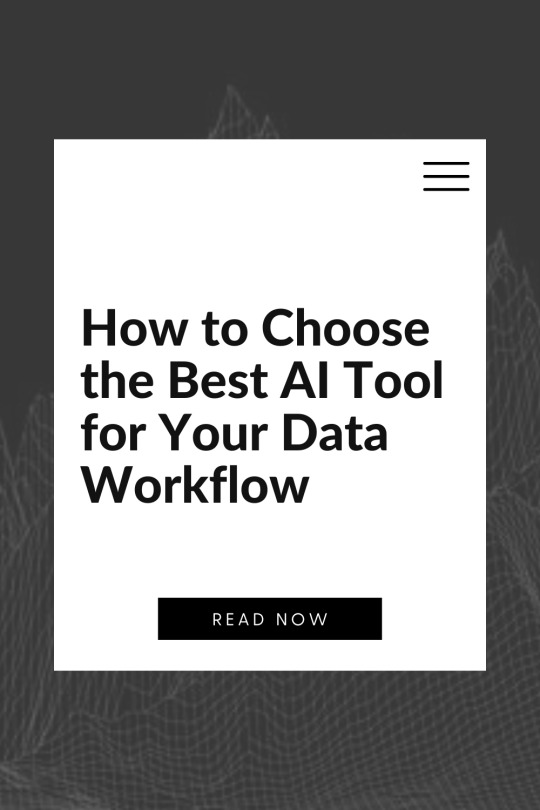#Business Process Automation Solutions
Explore tagged Tumblr posts
Text
Enhance Accuracy with Business Process Automation Solutions
Improve operational accuracy and efficiency with Katpro Technologies' business process automation solutions. Our automation strategies help businesses reduce errors, streamline workflows, and cut costs by automating repetitive tasks. From data entry to customer management, our solutions are designed to enhance the accuracy of your processes and improve overall performance. Let Katpro Technologies provide you with the tools to optimize your business operations and drive success through intelligent automation. Contact us today to find out how we can help you achieve operational excellence.

0 notes
Text
Sigma Solve designs AI and automation solutions for FinOps to identify inefficiencies, anomalies, and vulnerabilities to track waste and excessive human capital to improve productivity, cost-effectiveness, and data security. Set specific, measurable goals for what you aim to achieve with process automation solutions and AI. Integrate the chosen AI ML development services and automation tools into your workflows. Monitor their performance continuously and be prepared to iterate and refine your strategy
0 notes
Text
Strategic Partnerships: The Competitive Edge Offered by IT Consulting Firms

Delve into how forming strategic partnerships with IT consulting firms gives businesses a competitive edge. Their comprehensive understanding of technology landscapes and industry trends enables companies to make informed decisions, propelling them towards success.
#IT consulting firms#Copier Product Florida#Smart Printers Florida#Business Process Automation Solutions
0 notes
Text

Streamline FMCG Business With Rapidor's Robotic Automation Software
In the fast-paced world of FMCG, operational efficiency is key to thriving amidst high volumes and tight margins. With Rapidor's cutting-edge automation solutions, you can experience a new era of productivity and profitability.
Discover how Rapidor power FMCG Business.
Visit https://www.rapidor.co/types-of-industries/fmcg/
#Robotic Automation Software#business process automation#robotic process automation software#business process automation software#business process automation services#business process automation solutions#Business management software
1 note
·
View note
Text
Transform Your Online Business with ERPNext's Website & ECommerce Solutions by sigzen
Running an online business presents various challenges, from inventory management to order tracking and ensuring seamless customer experiences. This is where ERPNext comes into play. Think of it as a highly efficient assistant that takes care of all your business tasks, allowing you to concentrate on your core competency: growing your business. With ERPNext’s Website & ECommerce solutions, you’ll…

View On WordPress
#Automated Processes#business growth#Business Integration#ECommerce Management#ERPNext#Integrated Solutions#Online Business#Responsive Design
3 notes
·
View notes
Text
KGT Applications offers tailored business solutions. We design custom tools to automate tax processes, streamline operations and enhance efficiency to ensure tax compliance and business growth. With a comprehensive suite of enterprise software, businesses can optimize their processes and reach their maximum potential. Contact KGT Applications today!
#tax services#sap consulting services#business automation#business solutions#process management#Enterprise software
3 notes
·
View notes
Text
#eCheck#Electronic checks#ACH (Automated Clearing House)#Digital payments#Payment processing#Merchant services#Payment solutions#Secure transactions#Business payments#Online payments#Payment gateway#Payment technology#Financial services#E-commerce#Retail business#Small business#USA businesses#American merchants#Payment methods#Payment processing company#Payment processing solutions#Electronic payment options#Payment security#Card processing#Payment terminals#Mobile payments#Payment software#Point of sale (POS)#Payment integration#Business growth
7 notes
·
View notes
Text

Agentic AI: The Next Evolution of Autonomous Business Systems
As markets evolve and competition intensifies across every industry, organizations are under immense pressure to find smarter, faster, and more adaptable solutions to stay ahead. One of the most promising developments in artificial intelligence is the rise of Agentic AI. Unlike traditional AI systems that operate under rigid instruction sets, Agentic AI exhibits autonomy, adaptability, and decision-making capabilities that mirror human-like behaviour. This transformative leap is poised to redefine how businesses operate, optimize, and scale.

What is Agentic AI?
Agentic AI refers to systems designed to act as autonomous agents capable of perceiving their environment, making decisions, and executing actions in pursuit of specific goals. These AI agents are not merely reactive; they are proactive, strategic, and capable of learning over time. While traditional AI relies on explicit programming to function within predefined parameters, Agentic AI systems exhibit goal-oriented behaviour and can operate independently with minimal human intervention.
Agentic AI is built upon advancements in several core areas of AI research:
Reinforcement Learning: Enables agents to learn optimal behaviours through trial and error.
Cognitive Architectures: Provides frameworks that mimic human decision-making processes.
Multi-Agent Systems: Facilitates collaboration and competition between multiple autonomous agents.
Natural Language Processing (NLP): Allows agents to understand and communicate using human language.
Together, these technologies empower Agentic AI to engage in complex tasks such as strategic planning, resource allocation, customer interaction, and even creative problem-solving.
Key Characteristics of Agentic AI
Autonomy: Agentic AI systems operate independently, requiring minimal human oversight once objectives are defined.
Goal-Directed Behaviour: These systems pursue high-level objectives rather than executing narrow, task-specific instructions.
Adaptability: They adjust strategies and actions based on real-time data and evolving conditions.
Interactivity: Agentic AI can engage with users and systems through natural language and interfaces.
Self-Improvement: Through continuous learning and feedback, Agentic AI can enhance its performance over time.
Business Systems Powered by Agentic AI
Agentic AI is not just transforming individual workflows; it’s redefining entire business systems from the ground up. These agents are evolving from operational tools into dynamic components of enterprise architecture, capable of orchestrating complex interdependencies across departments.
1. Autonomous Business Operations
Agentic AI can manage end-to-end business processes with little to no human intervention. These agents are integrated into enterprise resource planning (ERP), supply chain management (SCM), and customer relationship management (CRM) systems, turning them from static data repositories into proactive, decision-making ecosystems. For example, a procurement agent can dynamically renegotiate supplier contracts based on market fluctuations and risk analysis, while another manages compliance updates across jurisdictions.
2. Customer Experience Systems
By embedding agentic models within customer-facing systems, businesses can build AI-powered service layers that anticipate needs, resolve issues, and deliver personalized experiences. Unlike static chatbots or scripted IVRs, Agentic AI can traverse multiple customer touchpoints (email, chat, voice, social) and deliver consistent, context-aware support.
3. Sales and Marketing Platforms
Agentic AI enables continuous experimentation and optimization in marketing systems. These agents autonomously test messaging, allocate budgets across platforms, and modify content strategies based on user engagement and real-time analytics. In CRM systems, they identify upsell opportunities, draft personalized communications, and coordinate multi-channel campaigns, essentially becoming an autonomous marketing operations layer.
4. Finance and Risk Management
In finance departments, Agentic AI is reshaping systems like forecasting, budgeting, and compliance monitoring. Agents can generate real-time cash flow projections, detect anomalies in expense reports, or autonomously trigger fraud investigation protocols. As finance systems become more modular and API-driven, Agentic AI acts as the "glue" coordinating across them, making intelligent decisions without waiting on batch processes or human review.
5. Human Capital Systems
Talent management platforms infused with Agentic AI can manage workforce planning, skill development, and internal mobility. For example, an internal agent could monitor team workloads, project deadlines, and employee engagement metrics, and then recommend internal transfers or hiring actions. These agents don’t just automate HR tasks; they actively shape the workforce strategy.
The Strategic Layer: Agentic AI as Enterprise Orchestrator
Perhaps the most transformative potential lies in Agentic AI’s ability to operate as an orchestration layer across disparate business systems. Imagine a "Chief Operations Agent" that interfaces with finance, sales, HR, and logistics, balancing priorities, identifying cross-functional inefficiencies, and reallocating resources in real time.
Such a system could:
Adjust pricing models based on supply chain costs and customer demand.
Initiate hiring sprees based on projected sales pipeline activity.
Re-prioritize product development sprints based on customer feedback and competitor moves.
These agents don’t just automate; they synchronize and strategize, providing a layer of continuous enterprise optimization.
“Software is eating the world, but AI is going to eat software.” — Jensen Huang (CEO of NVIDIA)
The Benefits of Agentic AI in Business
The integration of Agentic AI into business systems offers a multitude of advantages:
Scalability: Agentic AI can manage increased workloads without proportional increases in cost or human resources.
Efficiency: By automating repetitive and complex tasks, businesses can redirect human talent to higher-value initiatives.
Resilience: These systems can quickly adapt to disruptions, making businesses more agile and robust.
Data Utilization: Agentic AI can analyze and act upon massive datasets far beyond human capabilities, uncovering hidden insights and opportunities.
Continuous Optimization: With the ability to learn and evolve, Agentic AI ensures that processes are constantly improving.
Comparison: Traditional AI vs. Agentic AI vs. Human Decision-Making

Challenges & Considerations
While the potential of Agentic AI is enormous, its adoption also presents challenges that businesses must navigate carefully:
Ethical Concerns: Autonomy raises questions about decision accountability, data use, and fairness.
Security Risks: Autonomous agents must be hardened against manipulation and breaches.
Integration Complexity: Replacing or augmenting legacy systems can be resource-intensive.
Governance and Control: Clear frameworks must define when and how AI agents act independently.
Overcoming these challenges requires a combination of strong internal governance, AI ethics frameworks, and next-generation IT infrastructure.
The Future of Agentic AI
The trajectory of Agentic AI suggests a future where businesses function as decentralized networks of intelligent agents collaborating in real time. Imagine a digital enterprise where finance, logistics, customer service, and strategy are orchestrated not by departments, but by autonomous agents that seamlessly integrate and adapt to changing circumstances.
We are likely to see the rise of meta-agents, which are AI systems that manage other agents, coordinate cross-domain workflows, and enforce organizational goals. These will serve as the AI equivalent of the executive suite, translating strategy into dynamic execution.
Additionally, the democratization of Agentic AI through low-code/no-code platforms will empower non-technical users to deploy and manage AI agents without technical barriers; further accelerating innovation across all levels of an organization.
We’re standing at the cusp of a new industrial revolution, one not powered by steam or silicon, but by intelligent autonomy. Agentic AI is more than just another technological advancement; it's a reimagining of how work gets done. As these systems become more capable, their role in business will shift from tool to collaborator and from support system to strategic partner.
Embracing Agentic AI requires more than investment. It demands systems thinking, executive sponsorship, and a willingness to challenge the status quo.
Learn more about DataPeak:
#factr#datapeak#saas#technology#agentic ai#artificial intelligence#machine learning#ai#ai-driven business solutions#machine learning for workflow#ai solutions for data driven decision making#ai business tools#ai agents#digital technology#digital trends#digitaltools#datadrivendecisions#data driven decision making#dataanalytics#ai platform for business process automation#ai for business efficiency#ai business solutions#ai driven business solutions#business#ai technology#techinnovation
0 notes
Text
#NexaPent#NexaPent Technologies#IT services company#digital transformation#software development#AI-based solutions#QA testing#technology consulting#IT business solutions#Bengaluru IT firm#custom software#digital marketing#full-service IT company#IT recruitment#AI recruitment#tech hiring#IT staffing#IT recruitment services#candidate sourcing#IT talent acquisition#AI hiring tools#recruitment automation#IT headhunting#NexaPent recruitment#tech job placement#no-show solutions#IT onboarding#IT hiring process
0 notes
Text

#Process Automation#Intelligent Automation#Artificial Intelligence#Technology#Business#Centelli#Dubai#Automation Solutions#AI Solutions#Digital Worker
0 notes
Text
The Benefits of Business Process Automation for Small Businesses
Adopting business process automation solutions can transform small businesses by streamlining operations and boosting efficiency.

0 notes
Text
Fast-Track Growth with Business Process Automation Services
Accelerate Success with Business Process Automation Services
In today's competitive digital landscape, manual processes are no longer sustainable. Business Process Automation Services are transforming how modern businesses operate—eliminating inefficiencies, reducing operational costs, and enabling real-time decision-making.

From automated approvals and task scheduling to intelligent document processing and customer support workflows, automation tools can handle repetitive tasks with unmatched precision. By leveraging technologies like AI, machine learning, and RPA (Robotic Process Automation), companies can streamline their core operations while freeing up human talent for strategic work.
What makes BPA even more powerful is its scalability. Whether you're a startup or an enterprise, automation solutions can be tailored to your needs—integrating with your CRM, ERP, or cloud platforms seamlessly. The result? Faster turnaround times, improved accuracy, and a better experience for both employees and customers.
If you're ready to ditch the chaos of manual processes and fast-track your organization’s growth, investing in Business Process Automation Services isn't just an option—it’s a necessity.
#Business Process Automation Services#enterprise automation#digital transformation in banking and finance#enterprise mobility solutions#digital healthcare solutions
0 notes
Text
Discover the Best AI Automation Tools for Your Business
Artificial intelligence is revolutionizing the way businesses operate, and choosing the right automation tools is key to unlocking its full potential. According to MIT research, companies that strategically implement AI-driven automation see a significant boost in productivity. For business leaders, the challenge isn’t deciding whether to adopt AI automation tools — it’s determining which tools…
#AI-driven processes#Artificial intelligence tools#Automation technology#Business automation solutions#Machine learning software#Smart business automation#Workflow optimization tools
0 notes
Text
How a Business Process Automation Solution Can Transform Your Operations
In today’s fast-paced digital landscape, efficiency and productivity are key to staying competitive. Businesses of all sizes are turning to innovative technologies to streamline their operations, reduce human error, and improve overall workflow. One of the most powerful tools in this transformation is a business process automation solution.
Business process automation (BPA) involves using technology to automate repetitive tasks, standardize processes, and manage workflows. From customer service to inventory management, BPA can be applied across departments to eliminate bottlenecks and improve accuracy. Rather than relying on manual input for routine functions, automation allows your team to focus on strategic, high-value tasks that drive growth.
One company making significant strides in this field is Share Tech Solutions. Known for delivering tailored IT services and digital transformation tools, Share Tech Solutions helps businesses implement automation systems that align with their specific needs. Whether it’s integrating CRM systems, automating invoice processing, or managing employee onboarding, their approach is designed to boost operational efficiency and enhance scalability.
Choosing the best workflow automation software is crucial to the success of any automation initiative. The right platform should offer intuitive user interfaces, seamless integration with existing tools, and customizable templates to fit diverse processes. Features such as task tracking, approval flows, and real-time analytics empower businesses to maintain control and visibility throughout the automation journey.
Implementing a BPA system is not just about saving time. It also leads to more consistent output, better compliance with industry standards, and improved customer satisfaction. For instance, automating client communication or order processing can ensure no message or task falls through the cracks, ultimately improving service reliability and trust.
Moreover, automation enhances team collaboration. With clearly defined workflows and automated notifications, employees are better aligned and informed. This reduces confusion, speeds up decision-making, and fosters a more agile working environment. Managers can monitor progress in real time and make data-driven decisions to continuously optimize performance.
In conclusion, adopting a business process automation strategy is no longer a luxury—it’s a necessity for modern enterprises aiming to thrive. With the support of industry experts like Share Tech Solutions and the implementation of the best workflow automation software, businesses can achieve operational excellence, reduce costs, and scale faster than ever before.
Ready to revolutionize your business operations? Consider exploring a business process automation solution that fits your unique needs and goals. The future of work is automated—don’t get left behind.
1 note
·
View note
Text
#artificial intelligence services#machine learning solutions#AI development company#machine learning development#AI services India#AI consulting services#ML model development#custom AI solutions#deep learning services#natural language processing#computer vision solutions#AI integration services#AI for business#enterprise AI solutions#machine learning consulting#predictive analytics#AI software development#intelligent automation
0 notes
Text

How to Choose the Best AI Tool for Your Data Workflow
AI isn’t just changing the way we work with data, it’s opening doors to entirely new possibilities. From streamlining everyday tasks to uncovering insights that were once out of reach, the right AI tools can make your data workflow smarter and more efficient. But with so many options out there, finding the one that fits can feel like searching for a needle in a haystack. That’s why taking the time to understand your needs and explore your options isn’t just smart, it’s essential.
In this guide, we’ll walk you through a proven, easy-to-remember decision-making framework: The D.A.T.A. Method: a 4-step process to help you confidently choose the AI tool that fits your workflow, team, and goals.

The D.A.T.A. Method: A Framework for Choosing AI Tools
The D.A.T.A. Method stands for:
Define your goals
Analyze your data needs
Test tools with real scenarios
Assess scalability and fit
Each step provides clarity and focus, helping you navigate a crowded market of AI platforms with confidence.
Step 1: Define Your Goals
Start by identifying the core problem you’re trying to solve. Without a clear purpose, it’s easy to be distracted by tools with impressive features but limited practical value for your needs.
Ask yourself:
What are you hoping to achieve with AI?
Are you focused on automating workflows, building predictive models, generating insights, or something else?
Who are the primary users: data scientists, analysts, or business stakeholders?
What decisions or processes will this tool support?
Having a well-defined objective will help narrow down your choices and align tool functionality with business impact.
Step 2: Analyze Your Data Needs
Different AI tools are designed for different types of data and use cases. Understanding the nature of your data is essential before selecting a platform.
Consider the following:
What types of data are you working with? (Structured, unstructured, text, image, time-series, etc.)
How is your data stored? (Cloud databases, spreadsheets, APIs, third-party platforms)
What is the size and volume of your data?
Do you need real-time processing capabilities, or is batch processing sufficient?
How clean or messy is your data?
For example, if you're analyzing large volumes of unstructured text data, an NLP-focused platform like MonkeyLearn or Hugging Face may be more appropriate than a traditional BI tool.
Step 3: Test Tools with Real Scenarios
Don’t rely solely on vendor claims or product demos. The best way to evaluate an AI tool is by putting it to work in your own environment.
Here’s how:
Use a free trial, sandbox environment, or open-source version of the tool.
Load a representative sample of your data.
Attempt a key task that reflects a typical use case in your workflow.
Assess the output, usability, and speed.
During testing, ask:
Is the setup process straightforward?
How intuitive is the user interface?
Can the tool deliver accurate, actionable results?
How easy is it to collaborate and share results?
This step ensures you're not just selecting a powerful tool, but one that your team can adopt and scale with minimal friction.
Step 4: Assess Scalability and Fit
Choosing a tool that meets your current needs is important, but so is planning for future growth. Consider how well a tool will scale with your team and data volume over time.
Evaluate:
Scalability: Can it handle larger datasets, more complex models, or multiple users?
Integration: Does it connect easily with your existing tech stack and data pipelines?
Collaboration: Can teams work together within the platform effectively?
Support: Is there a responsive support team, active user community, and comprehensive documentation?
Cost: Does the pricing model align with your budget and usage patterns?
A well-fitting AI tool should enhance (not hinder) your existing workflow and strategic roadmap.
“The best tools are the ones that solve real problems, not just the ones with the shiniest features.”
— Ben Lorica (Data scientist and AI conference organizer)
Categories of AI Tools to Explore
To help narrow your search, here’s an overview of AI tool categories commonly used in data workflows:
Data Preparation and Cleaning
Trifacta
Alteryx
DataRobot
Machine Learning Platforms
Google Cloud AI Platform
Azure ML Studio
H2O.ai
Business Intelligence and Visualization
Tableau – Enterprise-grade dashboards and visual analytics.
Power BI – Microsoft’s comprehensive business analytics suite.
ThoughtSpot – Search-driven analytics and natural language querying.
DataPeak by Factr – A next-generation AI assistant that’s ideal for teams looking to enhance decision-making with minimal manual querying.
AI Automation and Workflow Tools
UiPath
Automation Anywhere
Zapier (AI integrations)
Data Integration and ETL
Talend
Fivetran
Apache NiFi
Use the D.A.T.A. Method to determine which combination of these tools best supports your goals, data structure, and team workflows.
AI Tool Selection Checklist
Here’s a practical checklist to guide your evaluation process:
Have you clearly defined your use case and goals?
Do you understand your data’s structure, source, and quality?
Have you tested the tool with a real-world task?
Can the tool scale with your team and data needs?
Is the pricing model sustainable and aligned with your usage?
Does it integrate smoothly into your existing workflow?
Is support readily available?
Selecting the right AI tool is not about chasing the newest technology, it’s about aligning the tool with your specific needs, goals, and data ecosystem. The D.A.T.A. Method offers a simple, repeatable way to bring structure and strategy to your decision-making process.
With a thoughtful approach, you can cut through the noise, avoid common pitfalls, and choose a solution that genuinely enhances your workflow. The perfect AI tool isn’t the one with the most features, it’s the one that fits your needs today and grows with you tomorrow.
Learn more about DataPeak:
#datapeak#factr#saas#technology#agentic ai#artificial intelligence#machine learning#ai#ai-driven business solutions#machine learning for workflow#digitaltools#digital technology#digital trends#datadrivendecisions#dataanalytics#data driven decision making#agentic#ai solutions for data driven decision making#ai business tools#aiinnovation#ai platform for business process automation#ai business solutions
0 notes